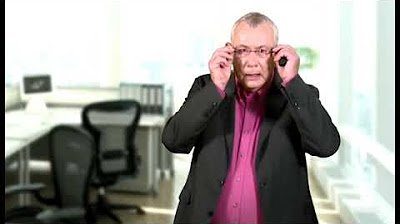At the restaurant|Japanese conversation#11|レストランで使う日本語
Summary
TLDRThis transcript showcases a series of typical interactions in a restaurant setting, focusing on the use of Japanese language in customer service. It includes greetings, order-taking, and polite exchanges between customers and staff. Key phrases such as 'irasshaimase' (welcome), 'o-matase itashimashita' (thank you for waiting), and 'gochisousama deshita' (thank you for the meal) are highlighted, reflecting the courteous and respectful nature of Japanese restaurant culture. The interactions cover reservation confirmations, menu choices, and requests for drinks and desserts, offering an insightful glimpse into Japanese dining etiquette.
Takeaways
- 😀 The phrase 'いらっしゃいませ' is a common greeting used by restaurant staff to welcome customers.
- 😀 The sentence '12時半に予約している、田中です' indicates a reservation made for 12:30 under the name Tanaka.
- 😀 '田中様お待ちしておりました' is used by staff to acknowledge and welcome the customer, Tanaka, who has arrived.
- 😀 'お決まりになりましたらお呼びください' politely asks customers to call when they have decided on their order.
- 😀 'Aセットを2つお願いします' is a polite way to order two sets of a specific meal, in this case, 'A set'.
- 😀 'ご飯とパンどちらになさいますか' is a question asking if the customer prefers rice or bread.
- 😀 '食後にお願いします' refers to requesting coffee after the meal.
- 😀 '料理と一緒にお願いします' indicates that coffee is being requested along with the food.
- 😀 'お住みのお皿をお下げしてもよろしいでしょうか' asks politely if the staff can clear the customer's empty plate.
- 😀 'すみませんお会計お願いします' is a polite way of requesting the bill at the end of the meal.
- 😀 'ごちそうさまでした' is a customary phrase said after finishing a meal, expressing thanks for the food.
- 😀 The phrase 'ご予約なさっていますか' is used by staff to inquire if a customer has a reservation.
- 😀 '外のお席なら、ご用意できます' informs the customer that there is seating available outside if they prefer.
- 😀 'ご注文はお決まりですか' asks the customer if they have decided on their order.
- 😀 'お飲み物は何になさいますか' asks the customer for their choice of drink, with '烏龍茶' (oolong tea) being a common option.
- 😀 'お待たせいたしました, ごゆっくりどうぞ' is a polite way to say 'Sorry for the wait, please enjoy your meal'.
Q & A
What does 'いらっしゃいませ' mean in the context of a restaurant?
-It is a Japanese greeting used by staff to welcome customers into the restaurant, similar to saying 'Welcome' in English.
What is the significance of '12時半に予約している'?
-'12時半に予約している' means 'I have a reservation at 12:30'. This is the customer informing the staff about their booking time.
What does 'お決まりになりましたらお呼びください' imply?
-This phrase means 'Please call me when you have decided.' It's a polite way for the staff to let customers know they can call when ready to order.
What is meant by 'かしこまりました'?
-'かしこまりました' means 'Understood' or 'Certainly'. It is a polite way for the staff to acknowledge the customer's request or order.
How does the staff respond to 'Aセットを2つお願いします'?
-The staff responds with 'かしこまりました', indicating that they understand the order for two 'A sets'.
What is the difference between 'ご飯' and 'パン' in this context?
-'ご飯' means 'rice' and 'パン' means 'bread'. The question is asking whether the customer prefers rice or bread with their meal.
When does the customer ask for coffee in the conversation?
-The customer requests coffee after the meal by saying '食後にお願いします', meaning 'Please bring it after the meal.'
What does 'お住みのお皿をお下げしてもよろしいでしょうか' mean?
-This phrase means 'May I take your plates?' The staff is asking for permission to clear the table.
What does 'ごちそうさまでした' mean, and when is it used?
-'ごちそうさまでした' is a polite phrase meaning 'Thank you for the meal,' typically said by customers after finishing their meal.
What happens when the customer asks, 'すみませんお会計お願いします'?
-The customer is requesting the bill by saying, 'Excuse me, may I have the check please?' The staff acknowledges this request by saying, 'かしこまりました'.
Outlines

This section is available to paid users only. Please upgrade to access this part.
Upgrade NowMindmap

This section is available to paid users only. Please upgrade to access this part.
Upgrade NowKeywords

This section is available to paid users only. Please upgrade to access this part.
Upgrade NowHighlights

This section is available to paid users only. Please upgrade to access this part.
Upgrade NowTranscripts

This section is available to paid users only. Please upgrade to access this part.
Upgrade NowBrowse More Related Video

English Conversation at a Café (Coffee Shop) | Useful Phrases

Memesan Makanan di Cafe | Percakapan Bahasa Inggris

[Order] May I take your order - Easy Dialogue - Role Play

Japanese Street Food - SUPER FAST MOCHI POUNDING Japan

Brilliant Customer Service - How to Impress your Customers! - Chapter 2

At the Restaurant English Conversation 🍽 | English Speaking Practice
5.0 / 5 (0 votes)